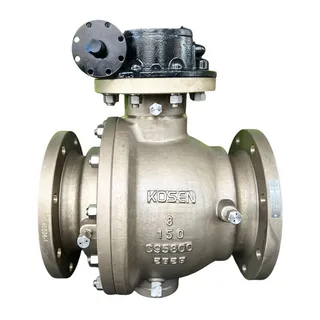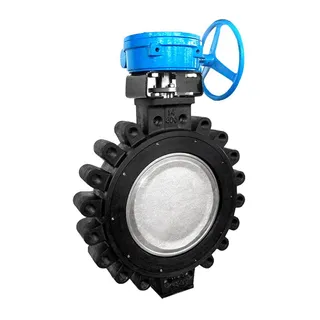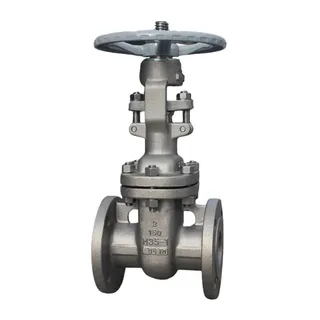In industrial production, the normal operation of fluid systems is crucial to production efficiency and product quality. As a key component of fluid systems, the correct selection of a steam trap directly affects the operational efficiency and safety of the entire system. This article provides a detailed explanation of how to choose the right steam trap to help you make informed decisions in practical applications.
The first step in selecting a steam trap is to understand the fluid medium and working conditions. Different fluid media, such as steam, gas, or liquid, have different physical and chemical properties, which determine the selection requirements of the steam trap.
Temperature: The temperature of the medium is one of the important parameters in selecting a steam trap. For example, the temperature of steam is usually high, and it is necessary to select a steam trap that can withstand high temperatures. If the medium temperature exceeds the temperature resistance range of the steam trap, it may cause damage or performance degradation of the valve.
Pressure: The pressure of the medium is equally important. The steam trap needs to operate normally under working pressure, while also considering the system's maximum and minimum pressures. If the pressure is too high, it may cause valve leakage or damage; if the pressure is too low, it may affect the drainage capacity of the valve.
Flow Rate: Flow rate refers to the amount of fluid passing through the valve per unit time. According to the actual flow requirements of the system, select an appropriate steam trap flow range to ensure that the valve can meet the fluid discharge requirements of the system.
The properties of different media vary greatly. For example, steam produces condensate during the condensation process, while gas requires consideration of whether it contains impurities or corrosive components. Understanding the properties of the medium helps to select the appropriate valve material and sealing performance.
There are various types of steam traps, each with its own advantages and disadvantages, suitable for different working conditions and media.
The float-type steam trap is a common type of steam trap. Its working principle is to use the buoyancy of the float to control the valve's opening and closing. When condensate accumulates, the float rises and opens the valve to drain; when the water level drops, the float falls and closes the valve.
Advantages:
High sensitivity: can quickly respond to changes in condensate and discharge in time.
Large drainage capacity: suitable for occasions requiring continuous drainage.
Unaffected by temperature and pressure changes: can maintain stable performance under different working conditions.
Applications: The float-type steam trap is suitable for heating equipment that requires rapid heating and cannot retain condensate, such as process heating equipment and steam pipelines.
The thermostatic steam trap uses the temperature change of the medium to control the valve's opening and closing. When the medium temperature rises, the valve closes; when the temperature drops, the valve opens.
Advantages:
Good energy-saving effect: can fully utilize the sensible heat of high-temperature condensate and reduce energy waste.
Simple structure: easy maintenance and long service life.
Applications: The thermostatic steam trap is suitable for steam pipelines, tracing lines, and small heating equipment, where the temperature requirements are not high but energy saving is needed.
The disc-type steam trap is suitable for high-temperature, high-pressure superheated steam pipelines and equipment. Its working principle is to use the vibration of the disc to control the valve's opening and closing.
Advantages:
Can operate under high temperature and high pressure: suitable for harsh working conditions.
Compact structure: small in size and easy to install.
Applications: The disc-type steam trap is suitable for high-temperature, high-pressure superheated steam pipelines and equipment, effectively separating high-temperature condensate.
According to the actual pipeline size and flow conditions, it is crucial to select the appropriate size and flow range of the steam trap.
The size of the steam trap should match the pipeline size to ensure smooth fluid passage. If the steam trap size is too small, it may cause increased fluid resistance and affect system operation; if the size is too large, it may cause resource waste.
According to the actual flow requirements of the system, select the appropriate flow range of the steam trap. The flow of the steam trap should meet the fluid discharge requirements of the system while maintaining normal operation. If the flow is insufficient, condensate may accumulate and affect the thermal efficiency of the equipment.
When selecting a steam trap, the reputation and quality of the supplier and brand are factors that cannot be ignored. A good supplier and brand can provide high-quality products and reliable after-sales service.
It is very important to understand the supplier's experience and technical support capabilities. An experienced supplier can provide professional selection advice and technical support to help you choose the right steam trap. Meanwhile, the technical support team can provide timely assistance during installation, commissioning, and maintenance.
High-quality after-sales service can ensure the stable operation of the steam trap during use. After-sales service includes regular maintenance inspections, troubleshooting, and spare parts supply. Choosing a supplier with good after-sales service can help solve problems in time and reduce downtime.
The inlet pressure of the steam trap refers to the lowest working pressure at the valve inlet, and the outlet pressure is the possible highest backpressure after the valve. According to process conditions, determine the amount of condensate generated during normal operation, multiply it by a correction factor, and select the appropriate model according to the drainage capacity of the steam trap.
The working differential pressure refers to the difference between the working pressure before the steam trap and the backpressure after the steam trap outlet. Calculate the differential pressure according to actual working conditions to ensure that the steam trap can operate under normal working pressure.
For occasions that require immediate condensate discharge, such as steam turbines, steam pumps, and main steam lines, do not use steam traps with subcooling, such as pulse-type and thermostatic bellows-type steam traps.
For occasions where condensate is below 15% of the rated maximum drainage capacity, do not use pulse-type steam traps, as fresh steam may leak from the discharge port under such conditions.
For occasions that require a quiet environment, such as offices, schools, research institutions, and residential areas, do not use noisy thermodynamic steam traps; instead, use thermostatic and float-type steam traps.
For outdoor working steam traps, generally do not use mechanical steam traps; if used, antifreeze protection should be provided.
For steam-using devices that do not allow condensate accumulation, use steam traps that can continuously discharge condensate, such as float-type steam traps.
For occasions that require the discharge of both condensate and non-condensable gases, use steam traps with dual drainage and exhaust functions.
For steam pipe networks that require the recovery of condensate using backpressure, use steam traps with a high backpressure ratio, such as mechanical steam traps.
In industrial production, different types of medium pipelines have different requirements for steam trap selection. The following is an analysis of steam trap selection for several common medium pipelines to help you choose the right steam trap according to specific application scenarios.
In process heating equipment, such as heat exchangers, drying chambers, rapid heat exchangers, and distillation equipment, rapid heating is required, and condensate cannot be retained. Mechanical steam traps, such as free-float steam traps, should be selected for these occasions. The free-float steam trap has advantages such as high sensitivity, small subcooling, and no steam leakage, allowing heating equipment to achieve optimal efficiency.
In steam pipelines, tracing lines, small heating equipment, and heating systems, thermostatic steam traps should be selected. Thermostatic steam traps have large subcooling and low condensate discharge temperatures, allowing full utilization of the sensible heat of high-temperature condensate, resulting in excellent energy-saving effects. The bellows-type steam trap has a compact structure, requires no manual adjustment, has high sensitivity, and a wide range of applications.
For high-temperature, high-pressure superheated steam pipelines and equipment, superheated steam traps should be selected. Superheated steam traps can separate high-temperature condensate under high temperature, high pressure, and small load conditions. Among them, the disc-type insulated steam trap uses pipeline steam to insulate the main chamber of the steam trap, featuring a compact structure, high operating quality, and long service life.
When selecting a steam trap, in addition to considering factors such as medium type, working conditions, and valve type, attention should also be paid to some key details to ensure that the selected steam trap meets actual application requirements and achieves optimal performance.
When selecting a steam trap, it must be based on the equipment's hourly steam consumption multiplied by a selection factor of 2–3 times as the maximum condensate capacity to determine the drainage capacity of the steam trap. This ensures that the steam trap can quickly discharge condensate during startup and rapidly increase the temperature of the heating equipment.
Do not select a steam trap based on nominal pressure, as nominal pressure only indicates the pressure level that the valve body can withstand, which is quite different from the working pressure. The drainage capacity of the steam trap should be selected according to the working differential pressure.
If the maximum steam temperature in the pipeline exceeds the saturated steam temperature corresponding to the nominal pressure, it is called superheated steam. For superheated steam pipelines, high-temperature, high-pressure superheated steam traps should be selected.
The specifications and sizes of steam traps should be selected according to the working differential pressure before and after the trap, condensate capacity, and seat number, based on the technical parameters of the steam trap manufacturer. Steam traps should not be selected arbitrarily based on the connection size of the equipment, as the condensate capacity of traps with the same diameter may vary greatly.
Choosing the right steam trap is crucial for ensuring the normal operation of fluid systems. When selecting a steam trap, it is necessary to comprehensively consider factors such as the fluid medium and working conditions, valve type, size and flow requirements, supplier and brand reputation and quality, and the differential pressure under actual working conditions. By following the selection principles of high sensitivity, steam-tight drainage, stable operation performance, high backpressure ratio, long service life, and easy maintenance, and combining the characteristics of different medium pipelines, you can choose the appropriate steam trap model and specifications. Only by selecting the right steam trap can system efficiency be improved, energy saved, and production benefits enhanced. It is hoped that this article will help you make the correct choice in practical applications.



